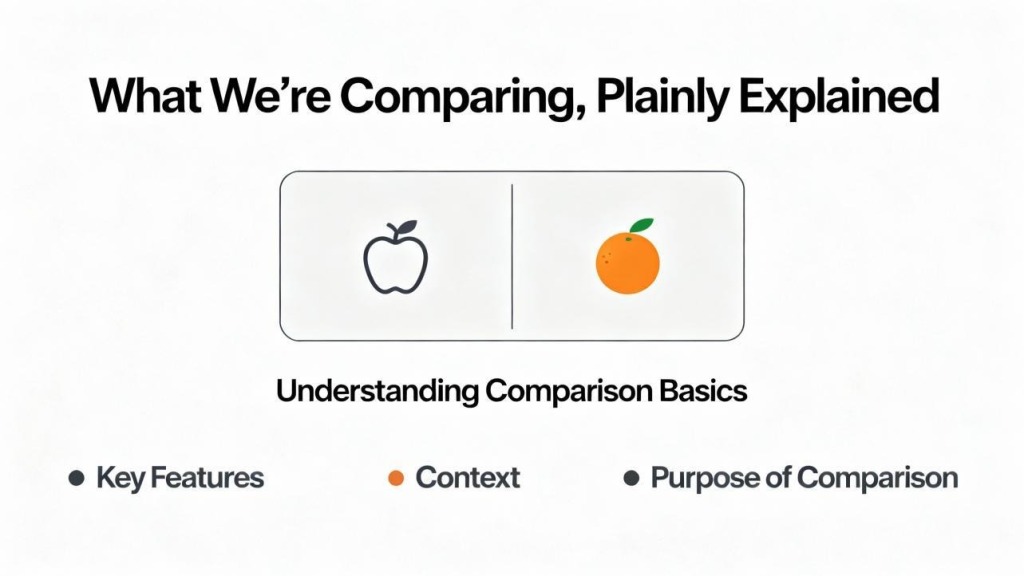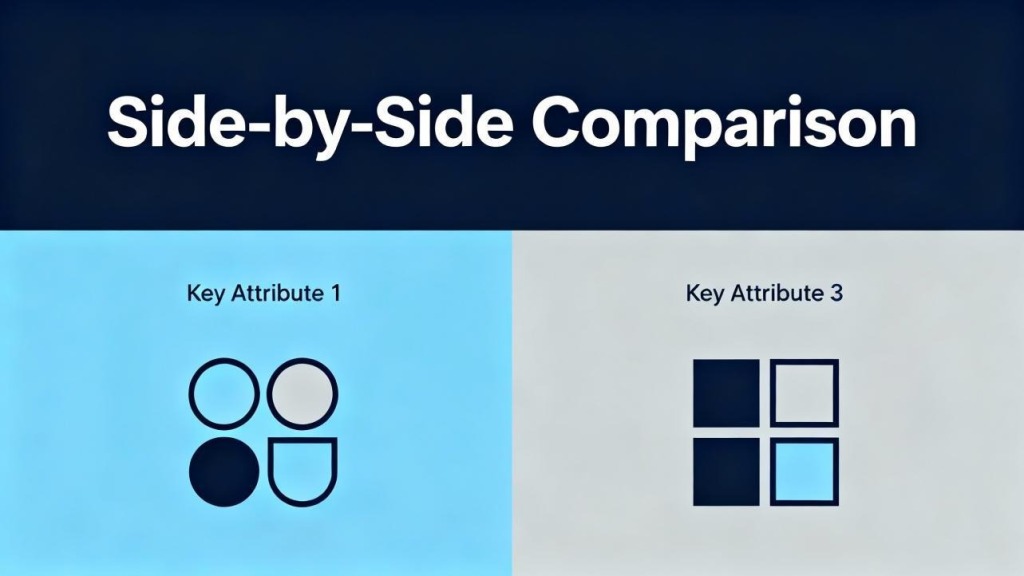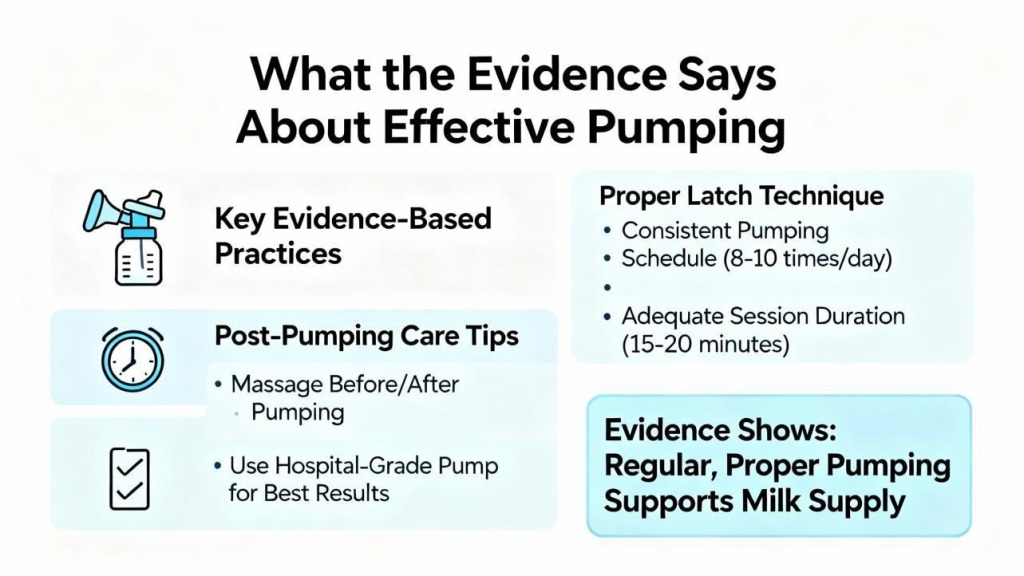
Choosing a breast pump often happens at a moment when time is short, emotions are high, and your baby’s needs evolve by the day. I’ve been there—juggling naps and work calls, learning the language of letdowns and flange sizes, and figuring out what actually fits into a diaper bag. This guide distills what I’ve learned as a mom and gentle parenting advocate, paired with evidence and insights from clinical and consumer sources, to help you pick between a traditional electric pump and a wearable, hands-free breast pump from Mom Cozy with confidence and calm.
What We’re Comparing, Plainly Explained
In everyday parenting terms, a traditional electric pump is the “workhorse” with a motor, tubing, and flanges that you hold to your breasts or secure with a pumping bra. It can be plug‑in or battery powered, and many models let you pump both sides at once to save time. A wearable pump is a compact, all‑in‑bra unit that sits inside your bra cup and collects milk without external tubing. It is still electric, just designed for hands‑free mobility and discretion.
Clinically, both are breast pumps that remove milk via gentle suction. Cleveland Clinic explains that pumps typically use a short, faster pattern to stimulate letdown and a longer, stronger pattern to express milk, and many electric models let you adjust both. Wearables are a subtype of electric pumps designed to be used untethered, inside the bra, while “hands‑free” can also describe a standard electric pump paired with a pumping bra. The U.S. FDA emphasizes that breast pumps are medical devices, so it’s wise to choose models that are approved and come with clear instructions and accessible replacement parts.

The Short Version: Both Can Work—Your Routine Decides
If you pump regularly for work or exclusive feeding, a traditional double‑electric is usually the most efficient, most consistent tool. Many lactation consultants and consumer reviewers caution that wearables can be wonderful for staying on schedule, but they may not empty as thoroughly and often work best as a convenient supplement rather than the only pump you use day after day. Sources like Babylist and Consumer Reports make this point clearly: wearables can help you avoid skipping sessions, but a powerful double‑electric tends to protect supply better when time and volume really matter.
If you need to move around, multitask, or keep pumping discreetly in a meeting or in the car, wearables shine. They will not replace every need for everyone, but they can keep your routine intact when life is not set up for sitting beside an outlet. Many parents use both: a standard electric for efficiency at home or during dedicated pumping breaks, and a wearable as a travel or “meeting‑friendly” backup.

A Side‑by‑Side Comparison
| Consideration | Traditional Electric (Desktop or Portable) | Wearable (In‑Bra, Tubeless) |
|---|---|---|
| Milk‑removal efficiency | Often the fastest and most thorough, especially with double pumping and good flange fit; emphasized by Wirecutter testing protocols and clinical reviews on pump effectiveness | Convenient and capable, but many reviewers and IBCLCs report that wearables can be less efficient as a primary pump for supply building; best as a supplement or for maintaining frequency |
| Time per session | Typically shorter when double pumping; many models have effective letdown and expression modes and stronger motors | Time can be comparable for some users, but output per minute may be lower; expect more variability across models |
| Supply support | Strong choice for establishing or increasing supply; clinical literature summarized in PubMed Central favors double electric pumping for output and efficiency | Helpful for maintaining session frequency when sitting to pump is hard, but may not be the best sole tool for boosting supply |
| Mobility and discretion | Portable versions exist; true hands‑free requires a pumping bra; more visible tubing and bottles | Fully in‑bra, no external tubes; ideal for errands, commutes, and walking around home or office |
| Noise | Most modern electrics are audible but reasonable; Wirecutter measured noise with a standardized decibel app and found differences model to model | Often quieter in public because they’re in‑bra; perceived as discreet in social settings |
| Comfort and fit | Flange fit is visible and easier to tweak in the open; wide range of sizes and shapes are available | Fit can be trickier to dial in because it’s hidden in‑bra; flange sizing still critical and can affect output and comfort |
| Cleaning and assembly | Varies by model; simpler kits are easier to wash several times per day, as Wirecutter notes | Some models have more small parts and require careful assembly; What to Expect testing highlights that incorrect assembly reduces suction |
| Capacity | Bottle capacity is often larger; easier to see milk volume in real time | Cup capacity can be smaller; watching volume requires app or frequent checks |
| Power needs | Plug‑in or rechargeable; battery life varies; easy to pair with car adapters for travel | Rechargeable only; battery life varies; charging cases can help on busy days |
| Cost and coverage | Frequently covered as a standard benefit under the Affordable Care Act; upgrades may cost extra; check with your insurer or DME supplier | Often considered an “upgrade” by insurers with some out‑of‑pocket cost; confirm specifics with your plan |
| Best‑fit scenarios | Daily work pumping, exclusive pumping, building or protecting supply, NICU separation, pumping on a schedule | Multitasking at home, commuting, discreet sessions in meetings, staying consistent when sitting to pump is hard |
These trends reflect a blend of clinical guidance and consumer testing. Cleveland Clinic, Medela’s technical resources, and peer‑reviewed summaries in PubMed Central all underline the efficiency benefits of double electric pumping, while Babylist and Consumer Reports repeatedly point out that wearables are excellent for staying on schedule but may not be ideal as the only pump when supply building is the primary goal.

What the Evidence Says About Effective Pumping
Researchers have compared how well pumps remove milk relative to a nursing infant and have studied how different suction patterns and setups impact output. A large evidence review, says PubMed Central, highlights that double electric pumping can improve both the amount of milk you remove and the time it takes, especially when settings mimic infant feeding patterns. That same body of work emphasizes comfort and fit: properly sized shields, appropriate suction levels, and warm, well‑fitted parts can improve letdown and overall efficiency. Wirecutter’s long‑form testing, while not clinical research, aligns with this by prioritizing models that combined comfortable suction with consistent output in 15‑minute sessions and measurable differences in noise and ease of cleaning.
The broad takeaway is reassuring. There is no single pump that is “best” for everyone. The best pump is the one that fits your body well, matches your schedule, and helps you pump as often as you intend without pain or dread. If you depend on pumping for most feedings or for time‑sensitive sessions at work, a double electric usually gives you better odds of finishing on time with good emptying. If you depend on real‑world flexibility, a wearable keeps you from skipping, which may matter even more.

Real‑Life Scenarios and What Usually Works
Returning to work with short breaks often favors a traditional double‑electric with a reliable pumping bra. The faster, stronger sessions make it easier to finish during a 15‑ to 20‑minute window, and many parents keep a wearable for meeting days or travel when sitting to pump isn’t feasible. For exclusive pumping or early supply building, hospital‑grade rentals or high‑performance double electrics are frequently recommended by lactation professionals, including resources from Medela and Cleveland Clinic. For moms at home chasing toddlers, wearables are a sanity saver, especially for maintaining frequency during chores or school pickups, though a standard pump is still helpful for at least one to two daily sessions when you can sit down.
For sensitive nipples or challenging letdown, look for adjustable speed and suction, a comfortable flange fit, and a letdown mode you can repeat. Cleveland Clinic notes that correct flange sizing is essential to avoid pain and protect output. If your budget and insurance coverage are top of mind, a standard double electric is more likely to be fully covered, while many wearables count as upgrades. WIRED’s buying guidance also reminds parents to make sure any pump is FDA‑approved and to review return policies carefully, since opened pumps are usually nonreturnable.
Set‑Up and Use Essentials You’ll Thank Yourself For
Plan your pumping space and practice assembly before you need it. Read the manual, assemble the kit, and run a dry test while you’re not rushed. Start sessions in the letdown or stimulation setting and then switch to expression mode once your milk flows. Adjust suction up to a strong but comfortable level rather than chasing the maximum setting. Wirecutter’s testers found that simple designs with fewer parts reduce cleaning time, which matters a lot by week two of daily use.
Fit is your foundation. The flange should center the nipple comfortably and allow movement without rubbing. If pumping hurts, it is a signal to adjust size, suction, or positioning. The Bump and Babylist both underscore that an accurate fit protects comfort and output. Because wearable flanges are hidden in the bra, check fit closely in a mirror and trial different insert sizes if the brand offers them.
Time expectations vary by person and device, but many parents find that a double‑electric session can be completed on both sides in the time it would take to do one side serially. According to the Cleveland Clinic, typical expression windows are around 10 to 15 minutes per breast, which you can often halve with a good double setup. If output falls or sessions lengthen, revisit fit, suction, and timing, and talk with a lactation consultant.

Cleaning, Sanitizing, and Milk Storage Without the Stress
Cleveland Clinic provides practical, food‑safe guidance that is manageable even on little sleep. After each session, rinse milk‑contact parts with cool water to prevent protein film, then wash with dish liquid and warm water, rinse hot for 10 to 15 seconds, and air‑dry on a clean paper towel or drying rack. Avoid dish towels that can harbor bacteria, and use a dedicated wash basin rather than the bottom of the sink. Many parts are dishwasher safe if your manual allows. For young infants, particularly under two months, daily sanitizing is recommended in addition to washing; microwave steam bags and boiling water are common options.
For storage, Cleveland Clinic’s advice is straightforward: refrigerate expressed milk for up to four days and freeze longer‑term, with best quality within about six months and acceptable up to a year. Label by date and time, and by baby’s name if daycare needs it. Plan transport with a small cooler and ice packs when commuting, a tip echoed in WIRED’s shopping guidance.
Buying Tips That Actually Help
Insurance in the United States commonly covers a standard personal‑use double‑electric pump under the Affordable Care Act, but the exact model and timing vary. Many plans ask you to order through an in‑network durable medical equipment supplier and allow low‑cost upgrades if you want a premium or wearable model. Wearables are frequently classified as upgrades with some out‑of‑pocket cost. Confirm coverage details with your plan before purchasing.
The FDA reminds parents that pumps are medical devices and that most retailers do not accept returns once a pump is opened, so try to handle a display unit, assess controls, and confirm flange sizing options before you buy. Make sure the model is FDA‑approved, parts are readily available, and the warranty is clear. Consumer Reports and Wirecutter both suggest weighing noise, cleaning complexity, and adjustability along with raw suction claims. It is also smart to keep a manual backup or battery pack, as the FDA suggests, so a power outage or dead battery doesn’t derail your schedule.
Quick Match by Use Case
| Situation | Primary Pick | Why This Choice Often Works |
|---|---|---|
| Daily work pumping with 15–20 minute breaks | Traditional double‑electric | Strong, consistent emptying in less time helps protect supply during short breaks |
| Exclusive pumping or early supply building | Hospital‑grade rental or high‑performance double‑electric | Clinical reviews favor double pumping and infant‑mimicking patterns for output and comfort |
| Busy home days, errands, or frequent commuting | Wearable, with a standard pump as backup | You stay on schedule when sitting is hard, while the standard pump supports deeper emptying |
| Low supply concerns or NICU separation | Hospital‑grade or robust double‑electric under lactation guidance | More effective, adjustable patterns and double pumping are associated with better output |
| Occasional pumping, travel, or backup | Wearable or manual plus cold‑storage plan | Simplicity and portability matter most; efficiency can be secondary for infrequent sessions |
These matches reflect published guidance from the FDA and Cleveland Clinic, clinical summaries on PubMed Central, and consumer testing from outlets like Wirecutter, Babylist, and Consumer Reports.
A Note on Wearable Features Like Warming and Apps
Some modern wearables add warming elements and app control to ease letdown and track sessions. What to Expect’s hands‑on review of a heated wearable describes it as quiet, discreet, and helpful for flow when preheated, while also noting that careful assembly is critical to maintain suction and that cleaning, while not difficult, takes attention to small parts. Manufacturer performance claims can be useful signals, but I treat them as starting points rather than proof. If warmth helps your letdown, that feature may be worth the additional cost; if not, you may prefer a simpler design that cleans faster.
Gentle, Practical Tips From One Mom to Another
The pump you will actually use is the best pump for your family. If sitting tethered to a motor makes you dread sessions, a wearable could keep you pumping consistently enough to meet your goals. If you need maximum output in a short window, a solid double‑electric can turn fifteen minutes into real relief. I kept both on hand: the wearable for school pickups and meetings, and the double‑electric for early morning and bedtime sessions when I wanted a thorough empty. Switching once a day to the more efficient pump seemed to help me stay comfortable and protect my supply.
If something hurts, the solution is not to “power through.” Adjust flange size, reposition, lower suction, or pause to massage. Reach out to a lactation consultant sooner rather than later if pain persists or output drops. This is not a test of toughness. It’s a matching exercise between a device and your unique body.
Takeaway
The choice between a traditional electric and a wearable pump is less about marketing and more about your daily rhythms. When supply protection and speed are paramount, a well‑fitted double‑electric usually wins. When staying consistent in real life is the bigger challenge, a wearable can be the difference between a missed session and a productive one. Many parents do best with both: a standard electric as the backbone of the routine and a wearable as the flexible tool that keeps the routine intact. Lean on clinical guidance for safety and efficiency, let your comfort lead the way, and adjust as your baby—and your days—change.
FAQ
Will a wearable pump hurt my milk supply if I use it every day?
Many lactation consultants and consumer reviewers, including Babylist and Consumer Reports, caution that wearables may not empty as thoroughly as a strong double‑electric for all users. That does not mean wearables hurt supply by default. It means if you depend on pumping to maintain or increase supply, it is wise to assess your output closely and consider pairing a wearable with at least one daily session on a traditional double‑electric. Confidence in this recommendation is moderate, based on expert consensus and consumer testing rather than randomized clinical trials.
Do I need a hospital‑grade pump?
Not everyone needs hospital‑grade performance. Clinical reviews on PubMed Central and guidance from Medela suggest that hospital‑grade or high‑performance double electrics can be valuable for exclusive pumping, early supply building, or NICU separations. If you are pumping occasionally or already have a comfortable supply, a standard double‑electric often suffices. Rentals can bridge a short term need without a major purchase.
How long should each pumping session take?
Cleveland Clinic describes typical expression windows of about 10 to 15 minutes per breast, noting that double pumping shortens total time and can increase efficiency. Real-life timing varies by body, flange fit, and pump, so let comfort and output be your guide. If you are consistently running long, revisit fit and suction levels or consult a lactation professional.
What does insurance usually cover in the United States?
Under the Affordable Care Act, most plans cover one personal‑use breast pump per pregnancy period, often a standard double‑electric. Wearables are frequently considered upgrade items with some out‑of‑pocket cost. Plans often require ordering through an in‑network medical equipment supplier. Check your plan’s timing, model list, and whether upgrades are allowed before you buy.
Can I buy a used pump or share one with a friend?
Cleveland Clinic and the FDA advise against sharing single‑user pumps for safety and hygiene reasons. Multi‑user, hospital‑grade pumps are designed to be shared safely with your own personal kit and are commonly rented. If you are considering any pre‑owned device, verify that it is designed for multiple users and replace all milk‑contact parts.
How important is flange size, really?
Flange fit is foundational. The right size protects comfort, helps letdown, and improves output. The Bump and Cleveland Clinic both emphasize sizing, and Wirecutter’s testers found that comfort and output rise together when fit is right. If milk flow slows, pain appears, or nipples rub, test a different size or shape and adjust suction downward before increasing again.
Evidence and Confidence Notes
I draw on clinical summaries and consumer testing to balance efficiency and real‑life usability. PubMed Central reviews support double electric pumping for effective milk removal and time savings. Cleveland Clinic offers practical, evidence‑based use, cleaning, and storage guidance that is easy to implement at home. Wirecutter’s testing approach, which assessed comfort, noise, cleaning, and perceived emptying during timed sessions, aligns with what parents notice day to day. Babylist and Consumer Reports repeatedly note that wearables are excellent for maintaining session frequency but may not be the best sole pump for building or protecting supply. WIRED adds purchasing context about FDA approval, return policies, and insurance upgrades. Individual wearable features like warming and app control are supported by hands‑on reporting from What to Expect; they are promising for comfort and letdown but are still best treated as personal preference features rather than guarantees of higher output. My inferences about combining a wearable with a traditional pump are high‑confidence from lived experience and widely published expert consensus; my conclusions about which specific wearable features matter most are moderate‑confidence and should be tailored to your needs.
If you would like, I can help match pump models to your specific schedule and insurance constraints, or create a week‑one pumping plan that balances comfort, supply protection, and time reality.




















